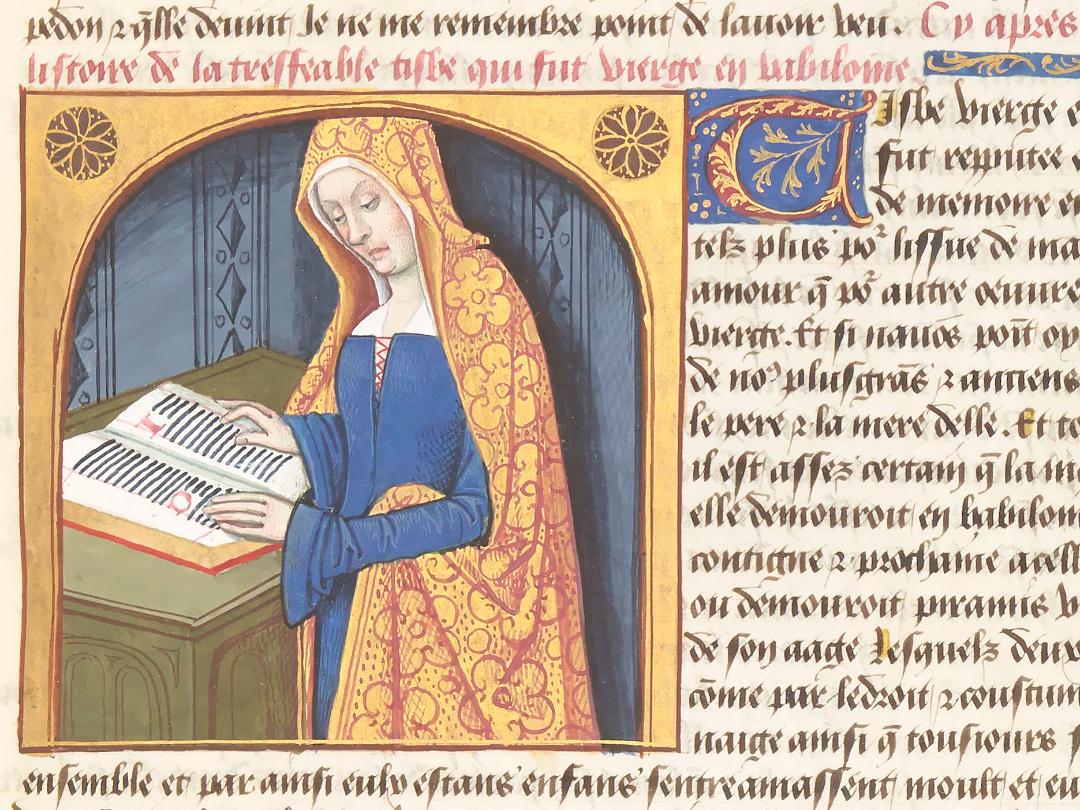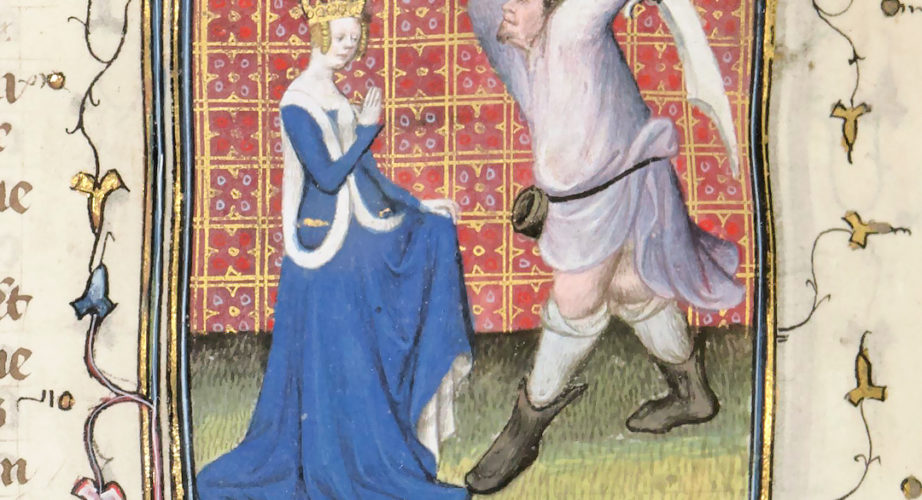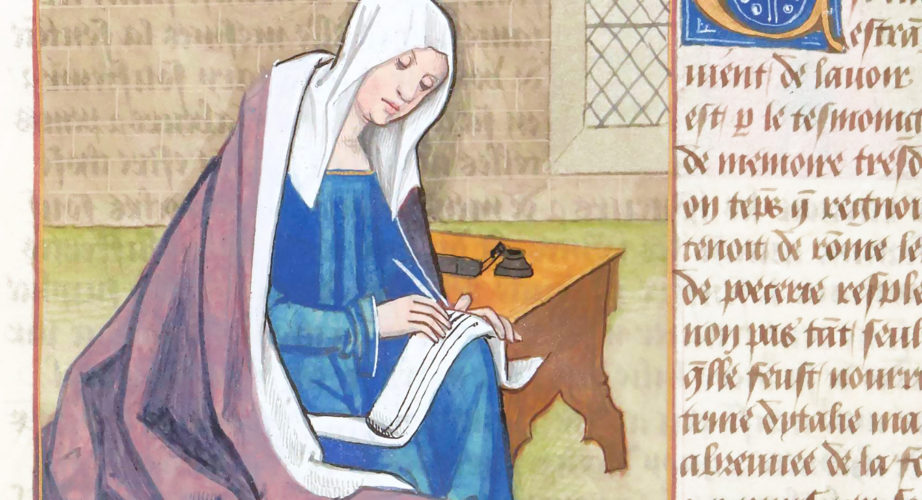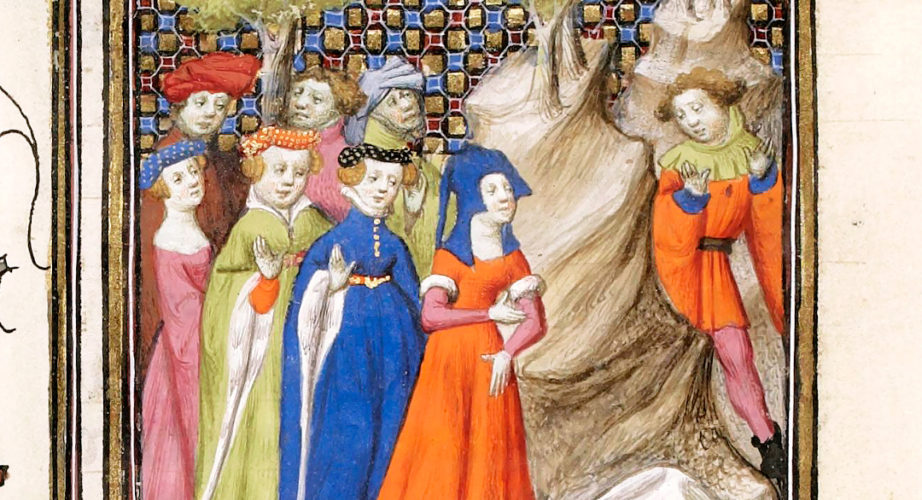THISBE
 It’s finally time for our Women’s Wednesday! Like every week we will focus on a new Mulier Clara: the spotlight this time is on Thisbe, a maiden from Babylonia, famous for her tragic love story with Pyramus.
Their parents’ rivalry, in fact, forced the two lovers - unable to love each other freely - to communicate through a crack in the wall that separated the two adjacent houses; determined to see each other, Thisbe and Pyramus arranged to secretly meet at night nearby Ninus’ tomb. When Thisbe arrived, however, she was scared by a hungry lioness: as she ran away her veil flew off her head, later to be chewed on by the beast and tainted by the blood of a previous pray. When Pyramus finally arrived all he saw was the bloody veil on the ground; thinking that his better half was no longer alive, he was overtaken by great pain and stabbed himself with a sword. At the very same moment, Thisbe came back and, finding Pyramus lifeless on the ground, she decided to join her lover in death.
In contrast with Ovid, who originally wrote the story in his Metamorphosis, Boccaccio focuses more on the consequences of the parents' total rejection of the relationship. According to the author of the De Mulieribus Claris, had the parents gradually prevented their children from falling in love instead of facing them with a sharp prohibition, they would not have run away overtaken by passion only to find their deaths.
Big fan of this love story was William Shakespeare, who used it as inspiration for A Midsummer Night's Dream and Romeo and Juliet.
“Thisbe”, illumination from the manuscript “De Mulieribus Claris”, decorated by Robinet Testard, ms. Français 599, f. 13r, 1488-1496, Bibliothèque nationale de France, Département des Manuscrits, Paris.
It’s finally time for our Women’s Wednesday! Like every week we will focus on a new Mulier Clara: the spotlight this time is on Thisbe, a maiden from Babylonia, famous for her tragic love story with Pyramus.
Their parents’ rivalry, in fact, forced the two lovers - unable to love each other freely - to communicate through a crack in the wall that separated the two adjacent houses; determined to see each other, Thisbe and Pyramus arranged to secretly meet at night nearby Ninus’ tomb. When Thisbe arrived, however, she was scared by a hungry lioness: as she ran away her veil flew off her head, later to be chewed on by the beast and tainted by the blood of a previous pray. When Pyramus finally arrived all he saw was the bloody veil on the ground; thinking that his better half was no longer alive, he was overtaken by great pain and stabbed himself with a sword. At the very same moment, Thisbe came back and, finding Pyramus lifeless on the ground, she decided to join her lover in death.
In contrast with Ovid, who originally wrote the story in his Metamorphosis, Boccaccio focuses more on the consequences of the parents' total rejection of the relationship. According to the author of the De Mulieribus Claris, had the parents gradually prevented their children from falling in love instead of facing them with a sharp prohibition, they would not have run away overtaken by passion only to find their deaths.
Big fan of this love story was William Shakespeare, who used it as inspiration for A Midsummer Night's Dream and Romeo and Juliet.
“Thisbe”, illumination from the manuscript “De Mulieribus Claris”, decorated by Robinet Testard, ms. Français 599, f. 13r, 1488-1496, Bibliothèque nationale de France, Département des Manuscrits, Paris.
Post consigliati
Mariamne
Historically and mythologically speaking, being in a powerful position (and perhaps also a…
Cornificia
The time has finally come for the very first Women’s Wednesday of 2021!…
Sulpicia
Welcome back to another Women’s Wednesday! Our weekly Mulier Clara, much like Sappho…


